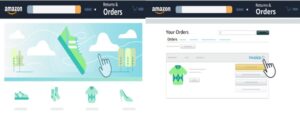UK PLASTIC PACKAGING TAX APRIL 2022
The HMRC Plastic Packaging Tax (“PPT “) that has taken effect on 1 April 2022 and applies to packaging tax in the UK that contains less than 30% recycled plastic content at a rate of £200 per metric tonne.
The tax only applies to “finished” plastic and mixed-plastic packaging component, designed to be suitable for use in the supply chain or single use by a consumer.
When will businesses have to register for Plastic Packaging tax?
Businesses would need to register for plastic packaging tax. If your business manufactured or imported more than 10 tonnes of finished plastic packaging components within the last 12 months, or it will in the next 30 days.
HMRC will work out the 12-month threshold differently between April 2022 and March 2023 (by only going back to April 2022).
Registering for the tax on plastic packaging does not necessarily mean that you are liable to pay. Because there is an exemption for packaging that contains at least 30 per cent plastic packaging recycling as a proportion of its total weight.
If business owner does not think they need to pay. You need to keep accurate records and show evidence. The assumption is that the plastic is not recycled until you can prove otherwise.
Which businesses are subject to Plastic Packaging Tax?
Businesses will need to review their packaging products to determine whether they classify as plastic. There are two different types of Plastic Packaging Tax that are subject to the tax:
- Use in the supply chain
- Single use by the consumer
It is important to consider that if the packaging is made up of various components. There will be a need to account for tax on each of those elements.
How to register for plastic packaging tax 2022
Businesses will only be able to UK plastic packaging tax April 2022 registration from the implementation date, i.e., 1 April 2022. There is no ability to register for PPT before this date.
Businesses must account for PPT from the point they identify their registration obligation and register within 30 days. As this threshold is based on the amount of finished plastic packaging, rather than chargeable plastic packaging, a registration requirement may exist even if there is no tax liability.
Plastic packaging tax (PPT) return
Businesses will need to file a plastic packaging tax return to HMRC each calendar quarter. The return and any tax due should be paid no later than the last working day of the month following the end of the accounting period being reported. All weights will be given in kilograms on the PPT return.
Penalties may apply when the return and payment are late. Also if the return contains incorrect information.
Record keeping requirements
Businesses need to ensure that they keep all the records used in order to prepare the plastic packaging tax return. This will include:
- A breakdown of the weight of plastic packaging components finished or imported in each period
• The weight of plastic packaging exported in the period on which the tax was deferred
• A breakdown of the weight of any plastic packaging for which a credit is claimed if the packaging has been:
– Exported
– Converted into new packaging components
- Any adjustments or corrections made to previous accounting periods – including the date and the accounting period they relate to Businesses must keep accounts by reference to each ‘product line’ that are produced or imported. A ‘product line’ is a group of plastic packaging components produced to the same specification.
Business does not use plastic packaging, so business does not need to do anything right?
Unfortunately, not. Business should keep records proving that you do not use plastic packaging in case of future requests from HMRC.
Businesses wishing to claim an exemption from PPT based on their plastic packaging components containing more than 30% recycled content must have records that:
- Show how they’ve worked out the percentage of recycled plastic
- Provide sufficient supporting evidence that recycled plastic was used
- Show which dates the evidence relates to, such as the dates that the components were finished or imported
- Show which plastic packaging component the percentage relates to, including product lines or production runs
- Are an accurate reflection of the proportion of recycled plastic contained in the output materials of that recycling process
- Confirm the source of the recycled plastic.


